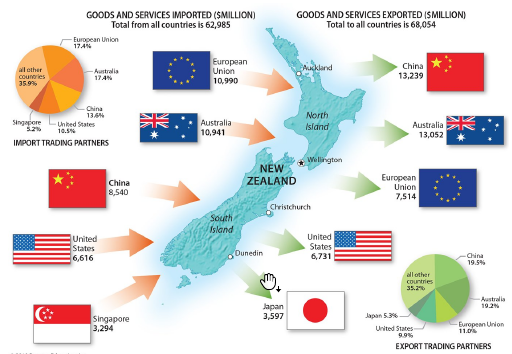What are the types of uplifts that can cause precipitation?
What will be an ideal response?
Answer: Precipitation occurs when air rises sufficiently to cause condensation. There are four types of conditions that cause air to rise: convection, orographic uplift, convergence, and fronts.
Convectional precipitation: Convectional storms are responsible for a large portion of the world's precipitation. In tropical climates, where strong insolation makes temperatures high, all that is needed for intense daily convectional storms is a source of humidity. In midlatitude climates, such storms occur mostly in the summer because higher temperatures allow the air to hold more moisture, and this means more latent heat can be released, causing strong convection.
Orographic uplift: When winds move air against a mountain range, the air is forced to rise as it passes over the mountain. As the air rises, it cools adiabatically. The cooling causes condensation, and precipitation results. This type of rainfall is called orographic rainfall. Descending air on the other side of the mountain, called the leeward side, is usually accompanied by a drop in the relative humidity. The leeward side of a mountain range is often much drier than the rainy windward side.
Convergent precipitation: Within greater storm systems, large areas of low pressure form, drawing in air from surrounding areas. This rising air causes precipitation. Such regions of low pressure and precipitation usually move, guided by large-scale circulation patterns.
Frontal precipitation: This type of precipitation forms along the boundary between two air masses, also called a front. In North America, air masses that form over central Canada, which tend to be cool and dry sometimes come in contact with air masses that form over tropical water, such as over the Gulf of Mexico, which tend to be warm and moist. At the front the cooler air is relatively dense, and therefore moves under the less dense warm air, while warm air tends to rise over cool air. The rising then cool, condenses and precipitation occurs.
You might also like to view...
Roughly half of New Zealand's exports go to

A) China, Japan and the United States
B) China, Australia and the European Union
C) Indonesia, the European Union and the United States
D) China, Japan and Indonesia
E) Australia, Indonesia and Japan
The concept of _____________ proposes that species change little or gradually over long periods
of time and then evolve quickly to give rise to new species. Fill in the blank(s) with the appropriate word(s).
Suppose two ocean currents with different temperatures are flowing next to one another. If the wind blows perpendicular to the currents, we would expect to find
a. ?radiation fog. b. ?steam fog. c. ?lenticular clouds. d. ?advection fog. e. ?haze.
The world's largest contemporary ice sheet is in ________
A) Greenland B) Alaska C) the Arctic Ocean D) Antarctica E) the Himalayas